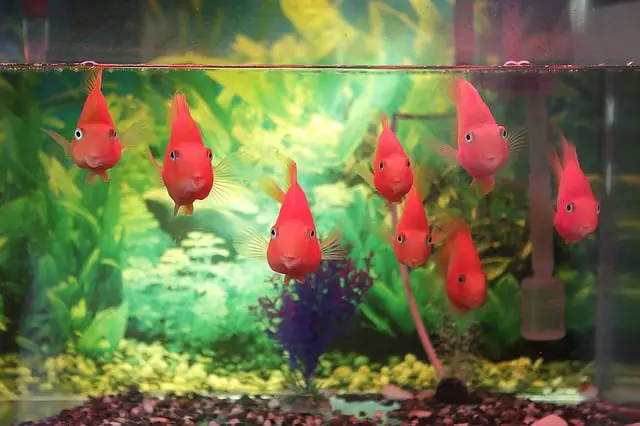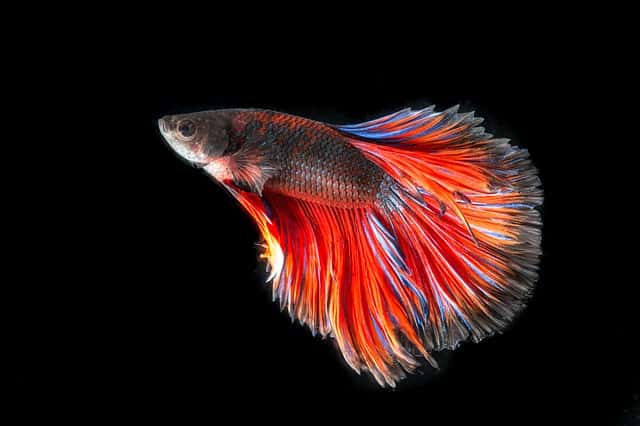For all of the years I have owned aquariums and gone into fish stores, I don’t ever recall hearing anyone talking about this. Even online, it’s not really mentioned that much until someone has an issue. This topic should be included in every beginner’s guide to owning an aquarium.
What is an aquarium Drip Loop? An aquarium drip loop is how the electrical cords outside of your aquarium are run to prevent issues with water dripping down into the outlet causing electrical problems. At one point, the cord is looped lower in relation to the wall outlet it is plugged into, this causes the water to drip off the cord safely.
As you probably know or can guess, water and electricity do not mix very well. The last thing you want is your breakers to turn off because of water in an outlet from an aquarium. Even worse, someone could get electrocuted and the power to the tank will be shut down. Depending on what you have in the tank and how long before the power is flipped back on, it could be a life or death situation for the fish. Let’s discuss this further.
What Does Drip Loop Mean?
According to Merriam Webster Dictionary a drip loop means “a downward loop”. Source.
In the case of an aquarium application, the loop would be before a power outlet. The loop is lower than the outlet.
What is the Purpose of a Drip Loop?
If you need further description, the purpose of a drip loop is to prevent water from running from the aquarium down a power cord and into a power outlet. Nothing more.
How to Run Your Aquarium Cords Safely
I know how exciting it is getting a new tank setup you just want to fill it with water and get the nitrogen cycle going. What you also need to do is ensure your power cords are run safely to avoid danger to yourself and your tank. This won’t take long, so let’s just get into it.
- If you are plugging into an outlet that is the standard 12” or so off the ground, what you should be concerned with is that the cords droop (or loops) somewhere before it is plugged into the wall. This means the cord will drop lower than the outlet. I would shoot for at least 4” lower.
- Another option to running your cords safely is to plug them into outlets that are up above the aquarium. You should never have issues with this type of setup. That being said, I have a large tank that has an outlet about 4’ off the floor. I installed it this way to hide the cords. I still have a loop because it is still not higher than the aquarium water.
- When running a drip loop, if you want to have some extra protection, here is a trick. In the location of the “loop” in the cord, tie a string measuring just a few inches. What happens is if, by chance, water does run down your power cord, it will basically stop at the string and run down the string. This is simple and effective.
What if you are Plugging Your Aquarium into an Extension Cord?
If your extension cord is hanging behind your tank or laying on the floor, you need to tie up the power cords so there is a loop in them before the location of the plugs plugging into the extension cord. There is nothing wrong with attaching cords to the wall. You can even purchase cord clips that make this job super easy to complete.
I have an aquarium cord that plugs into an extension cord that is laying on the floor. What I did and is another idea for you is to wrap the cord from the tank around a leg of the tank stand so when water hits that location it shouldn’t keep following the cord after the leg. Make sense?
Install a GFCI (What is a GFCI)
Another idea if you have the funds is to install a GFCI outlet where you plug your aquarium into.
A ground fault circuit interrupter outlet will shut off power once the power source fluctuates or if water finds its way into the outlet. This gives you the opportunity to fix the problem without any damage that might occur if a regular outlet was used.
If you like this idea but you’re not sure how to install a GFCI, I would recommend hiring an electrician. It might even be required by law where you live. If you go this route, you should still create a drip loop to help prevent your GFCI from having water run into it.
Some related questions I found while researching for this article.
Let’s assume water somehow runs down your aquarium cords and the power gets turned off and you just happen to be at work for the day.
How Long Can a Fish Tank go Without Electricity?
This will be different from tank to tank. In a situation like this, if it’s a large aquarium, the fish will be better off. A smaller tank will notice the lack of filtration and heat sooner.
But how long can they go? If you take precautionary measures and help keep the tank warm, even if you need to wrap it with a blanket, do that.
I would think that up to 24 hours shouldn’t be a problem for your fish. Anything longer than that and you might have some problems.
Will my Fish Die if the Power Goes Out?
The longer the power is out, the better the chances of your fish dying. I would say they are probably safe for a day or more without power.
Can Fish Live Without a Filter for One Day?
Yes, I feel 24 hours should not be a problem. If it is, then your tank was already in a bad state before the power went off.
How Can I Oxygenate My Fish Tank Without Electricity?
The only thing I can think of is how do you get surface agitation when the power is off?
What you can do is grab a container and scoop up some of your aquarium water then pouring it back in. This provides the opportunity for carbon dioxide in the water to exchange at the surface level with oxygen. This is probably the easiest and best way to do this without scaring the fish to bad. If you can think of another way to create surface agitation, then do that.
Summary
To summarize, an aquarium drip loop is a loop on an electrical cord that loops down lower than the power outlet it is plugged into. One excellent tip I provided was tying a piece of string to the bottom of the loop to help ensure any water flows down the string and doesn’t carry along the cord.
If the power happens to go out, don’t worry, as your fish should be good for at least a day. As well, you can always agitate the tanks surface water to encourage the exchange of oxygen into the water.
I trust you are now thoroughly versed in what a drip loop is for aquariums and feel confident in how you have your power cords arranged. Good luck, fellow hobbyists.
Related Aquariums-at-Home Articles.
Aquarium Set Up for Beginners.






